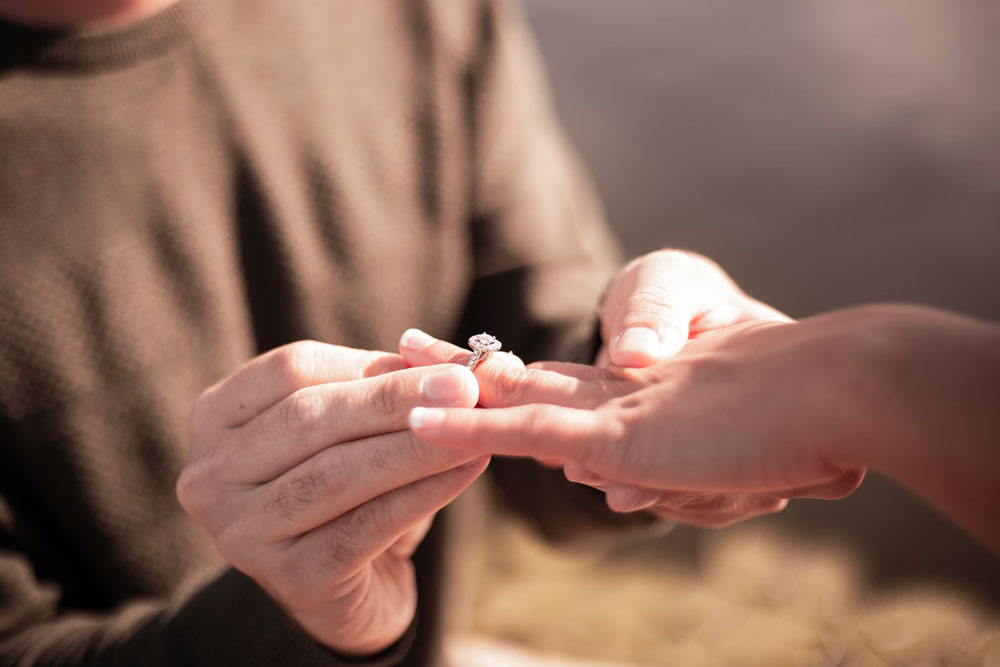
The Best Places to Buy Affordable Engagement Rings Online
July 31, 2022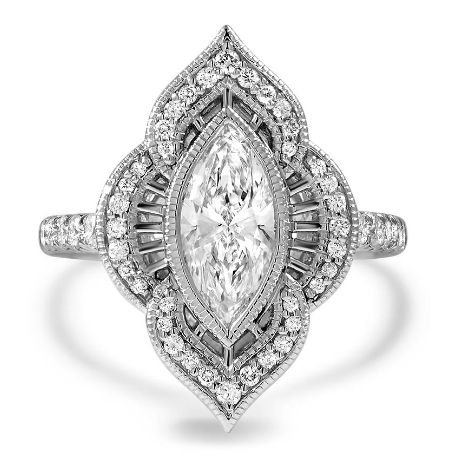
A Guide to Filigree Diamond Rings
August 30, 2022How Big is a Carat Diamond?
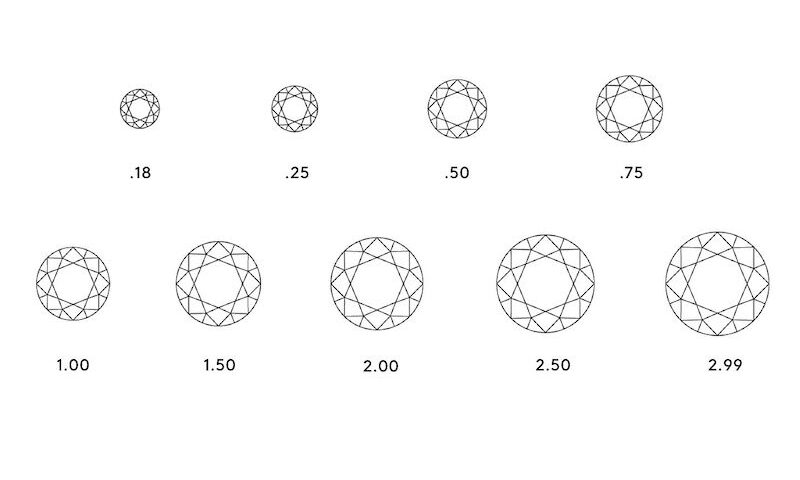
A one-carat diamond is usually around 6.4 to 6.5mm wide, which is the perfect size for the center stone—not too big, not too small. It’s one of the more common sizes of diamond, due to its wide availability and generally lower price point, however, this can be affected by a diamond’s other qualities, namely its cut, color, and clarity.
In terms of diamond price and size, the cost isn’t linear. A two-carat diamond isn’t the price of a one-carat diamond, as prices ascend exponentially. Take these two diamonds. The first is a beautiful 1.00 ct D VS1 Round Cut Loose Diamond currently priced at $9,390. The second has the same characteristics (D color, VS1 clarity, Very Good cut), but it’s priced at $44,178. The only major difference? It’s a two-carat diamond. This is the reason I’ll always recommend a one-carat diamond first, especially to first-time buyers.
Diamond size doesn’t follow this exponential rule. In fact, a 0.5-carat diamond and a one-carat diamond are only around 1.5mm different in diameter, and a two-carat diamond only around 1.5mm bigger than that. One thing that’s important to remember is that any given increase in the diameter of a diamond yields an increase in surface area, which can mean big differences in how the size of a diamond is perceived.
Let’s delve a little deeper into the question ‘how big is a carat diamond?’
- How Big is a Carat Diamond?
- The Diamond Carat Sizing Chart
- What is the Average Diamond Size?
- Does Carat Weight Matter?
- YourDiamondGuru Recommendations
How Big is a Carat Diamond?
No diamonds are exactly the same. Sizes are different, cuts are different, colors are different. Two one-carat diamonds may have different diameters due to the way they’ve been cut, but they’re generally cut to the same standard sizing the world over.
 This chart is rough, but does express the average sizes of particular size diamonds in relation to an everyday pencil. Remember that these are also Round Brilliant diamond (the most popular and most common cut), and so other cuts, such as Emerald or Princess, will look different in comparison.
This chart is rough, but does express the average sizes of particular size diamonds in relation to an everyday pencil. Remember that these are also Round Brilliant diamond (the most popular and most common cut), and so other cuts, such as Emerald or Princess, will look different in comparison.
What is Carat?
Carat is the measurement the diamonds are measured in. It’s essentially how much a diamond weighs, not the actual size, and the more diamond you have, the higher the value. Measuring diamonds makes sense within the industry, as the vast amount of diamonds have different cuts and different proportions, so it makes no sense to compare them by these measurements.
The actual weight of one carat was agreed upon in 1907, at the Fourth General Conference on Weights and Measures. At that moment, the modern carat that we use was defined as equaling 200 milligrams, which is also known as a ‘metric carat’. It’s the same measurement we use today.
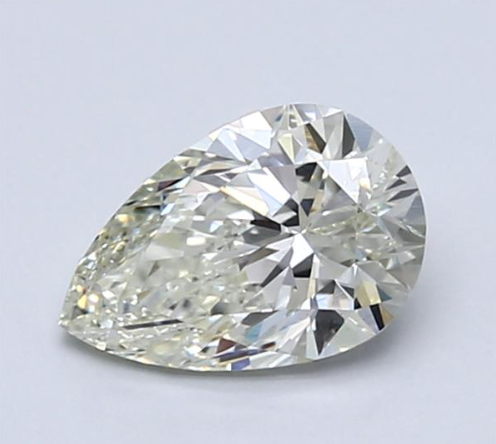 |
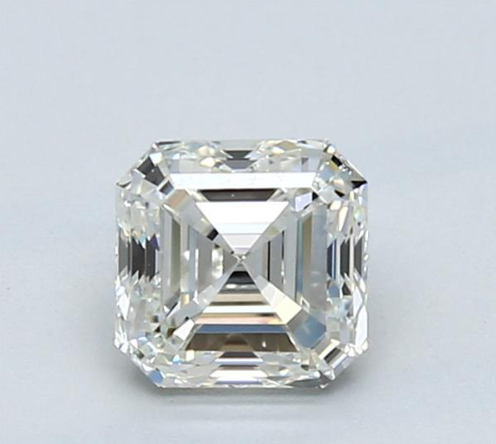 |
| A 1.00-Carat Pear Shaped Diamond | A 1.00-Carat Asscher Cut Diamond |
As you can see by these two diamonds, each available at Blue Nile, have completely different proportions even though they both weigh one carat, so measuring and comparing by mass is a lot easier for the diamond industry.
But remember, a diamond’s value isn’t just determined based on its carat weight. Diamond evaluators take multiple characteristics into account, such as the overall cut quality of the diamond, how transparent in terms of color the diamond is, and how internally pure it is. These characteristics are known as the Four Cs.
The Diamond Carat Sizing Chart
Not everyone wants a one-carat diamond, as some people prefer much larger stones. These have a much higher price tag, so it’s all about personal preference and the kind of budget you are working with.
I’ve created a handy chart you can use to visualize just how big diamonds of different carat weights can be.
| Round Carat Weight | Round millimeter diameter |
| 0.25 ct | 4.0mm |
| 0.5 ct | 5.1mm |
| 0.75 ct | 5.8mm |
| 1.0 ct | 6.4mm |
| 1.25 ct | 6.9mm |
| 1.5 ct | 7.3mm |
| 1.75 ct | 7.7mm |
| 2.0 ct | 8.1mm |
| 2.25 ct | 8.5mm |
| 2.5 ct | 8.9mm |
| 2.75 ct | 9.0mm |
| 3.0 ct | 9.3mm |
| 3.25 ct | 9.5mm |
| 3.5 ct | 9.75mm |
| 3.75 ct | 9.9mm |
| 4.0 ct | 10.1mm |
| 4.25 ct | 10.43mm |
| 4.5 ct | 10.63mm |
| 4.75 ct | 10.83mm |
| 5.0 ct | 11.01mm |
What Else Should You Look For in Diamonds?
If you’re just starting out in looking for a diamond for a piece of jewelry—maybe a diamond engagement ring—you might not know what to look for. We’ve all been there. The diamond world is complex, exciting, and wide.
The perfect place to start is by doing the research. There are countless places for diamond education online, and fortunately, you’re here already.
Head to the YourDiamondGuru education section to start learning more about diamonds today.
What is the Average Diamond Size?
When it comes to diamonds used in rings (predominantly diamond engagement rings), one-carat diamonds will always be the benchmark size. Not only are they the perfect size for engagement rings, they also are one of the more accessible diamond sizes in terms of price.
However, because of its popularity, a one-carat diamond can usually come at a premium, simply because they’re so in demand. So when you’re looking for a one-carat diamond, always consider the other characteristics, get familiar with them, and sort through what characteristics you’re after. Only by doing this will you be able to get the best deal.
 This is a fantastic and affordable one-carat diamond, currently available from James Allen. With VS1 clarity grading and an Excellent cut, it’s a great example of the perfect choice for using within diamond jewelry, such as an engagement ring.
This is a fantastic and affordable one-carat diamond, currently available from James Allen. With VS1 clarity grading and an Excellent cut, it’s a great example of the perfect choice for using within diamond jewelry, such as an engagement ring.
Does Carat Weight Matter?
Does carat weight matter? Not at all. Carat weight is just the size of the diamond. Of course, many diamond aficionados will enjoy the rarer, larger diamonds, but a true diamond lover will always look for other qualities regarding color, cut, and purity over size—these are the important things. At the end of the day, you neither see the carat weight of a diamond, nor do you feel it when wearing one. And, as you can see in the sizing chart above, there’s really not much difference between a one-carat diamond and a two-carat diamond.
YourDiamondGuru Recommends
I realize that many diamonds that are one-carat can be expensive. $5,000 is expensive. $6,000 is expensive, and I’d never say to potential buyers that they should do away with any sort of budget they had set themselves.
Fortunately, there are ways and means of reducing the amount of money you have to spend and still walk away with a beautiful diamond. For example, there are several things you can do:
- Choose a diamond with the lowest color grading that still looks good.
- Choose the largest carat diamond that fits within your budget.
- Choose the diamond with the lowest clarity grading that still looks good.
- Watch out for salespeople who are trying to make you spend more than you want to.
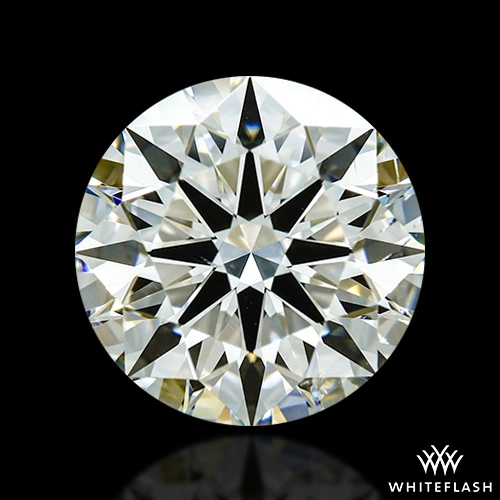 This 0.994 ct J SI1 A CUT ABOVE® Hearts and Arrows Diamond is a good example of how you can shave off a little bit of money but still get a great diamond. Head to the Whiteflash page to see HD video of this diamond and how it shines beautifully.
This 0.994 ct J SI1 A CUT ABOVE® Hearts and Arrows Diamond is a good example of how you can shave off a little bit of money but still get a great diamond. Head to the Whiteflash page to see HD video of this diamond and how it shines beautifully.
Always speak to an expert to help you make your choice. If you can go to a physical store to see the diamonds for yourself, but if you can’t, there are online options which are just as trustworthy. Big names such as James Allen, Blue Nile, Whiteflash, and Brilliant Earth are four of my favorites that I will always recommend.
Finally, always remember to look for great cut quality. A great cut quality produces great light performance, which can make a small diamond look larger than it actually is. Light performance is, ultimately, the thing that impresses us the most and catches our eye, so ensuring our diamonds can provide it is crucial.
So start looking for one-carat diamonds with these recommendations in mind, and remember that carat weight isn’t everything. Diamonds are much more than how big they are, and size has nothing to do with overall quality.

